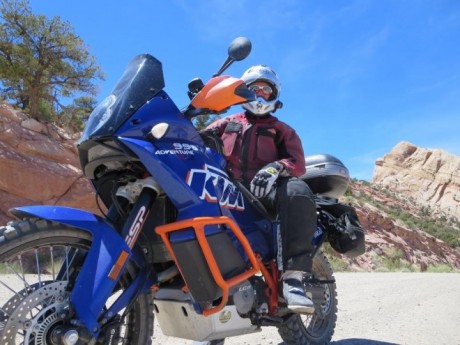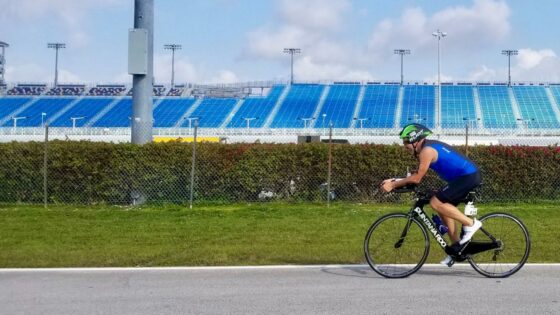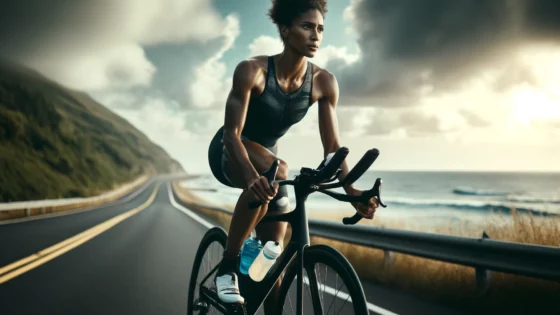Please read the blog post and watch the video below, as Coach Rich explains the rules and their practical application, from his experience as an long course triathlete, coaching, and having ridden motorcycle support for many Ironman® events.
Note that the intent of this post isn’t not to replace a thorough read and understanding of the rules of Ironman® triathlon, nor is it to provide a primer for how to draft on the bike course. Rather, Coach Rich’s observation on the course is that many, many athletes have a vague understanding of the rules or simply have no clue of the rules at all.
So we’re trying to fix that by helping to educate the long course triathlon community about the rules of their sport.
Access Our Insider Triathlete Email Series
How Drafting Works:
You as the Pass-er
- Ride on the far right, always, except when passing.
- You must maintain a distance of 4 bike lengths or greater from the front of your front wheel to the rear of the rear wheel of the bike in front of you.
- Once you get closer than 4 bikes lengths, you are in the “draft zone.”
- There is no such thing as a “stagger” or “offset.” That is, if you’re inside 4 bike lengths…but offset/staggered to left by 2-3 feet, you are still inside the draft zone! This is a big one, in my experience, as athletes often think they are within the rules while 2-3 bike lengths off the wheel in front of them…but staggered to the left.
- Once you enter the draft zone, you must now pass the rider in front of you. You have 20 seconds to execute this pass.
- Once you enter the draft zone, you must pass. You can’t move up, change your mind, back out…go back in the zone…back out, etc.
- The pass is completed when your front wheel breaks the plane of the front wheel of the bike you are passing.
- Once the pass is completed, you must now move over to the right, unless you are now inside 4 bike lengths of the next bike, in which case you have 20 seconds to pass that bike, then the next, etc.
Remember: if you’re not actively passing someone, you need to move fully over to the right.
You as the Pass-ee
- Ride on the far right, always, except when passing.
- You do not necessarily “have to” let the person attempting to pass actually pass you. Though we don’t recommend it, you can certainly drag race if you want 🙂 However…
- The pass is completed, you have been passed, when the plane of their front wheel breaks the plane of your front wheel.
- It is now your responsibility to get the required 4 bike lengths of distance. You have 20 seconds to do this.
- Finally, you must fully exist the draft zone (ie back off until you at a minimum of 4 bike lengths distance) before attempting to pass the athlete who just passed you. This is another rule that athletes often miss.
You as Pass-er…behind another Pass-er
This is where it gets a little tricky, as we begin to get into body language, intent, and other factors that draft marshals look for to identify people they need to watch more closely.
Need help executing your next race?
Get our Long Course Triathlon Seminar.
This is the scenario:
- You are inside the draft zone of the bike (Mr First) in front of you and begin to pull out to the left to execute your pass. But a quick glance shows that another rider is passing you, as you are about to make your own pass. So you wait a tick and pull out behind this 3rd rider as he passes you.
- You are now inside the draft zone of the 3rd rider and you’re both ticking away your 20 seconds to execute the pass.
- The wheel of Mr Third breaks the plane of Mr First and, the pass having been completed, he moves over the right, in front of Mr. First. Hopefully continues his pace and extends the gap between First and Third.
You now have two choices:
- As Mr. Third passes Mr. First, you drop into the space between them. Or…
- After passing #1, you pass #3 and move over to the right.
Door #2 leaves you 100% in the clear, as you are never close to being in violation, and your actions and body language communicate to a draft marshal that you are definitely making your own way through the field.
Door #1, however, can potentially identify you to a race official that you are someone to watch. Note that when you take up your position between Third and First, you will likely be inside the draft zone of Mr. Third…so you’re supposed to pass him within 20 seconds, correct? But you don’t. Instead you back out of this space, exiting the zone from the rear, which you have 20 seconds to do. But where in the scenario above did your 20 seconds start? Does a draft marshal have a watch, counting off the 20 seconds, on both you and Mr. Third.
This is where a draft marshal is going to rely on his experience as a cyclist to know when someone is trying to intentionally draft, by observing their actions and body language.
When in Doubt
Understand that a draft marshal is very likely another athlete and he’ll rely on his experience with body language and other tells to identify the intentional drafters among a field of over 2000 athletes.
- Just stay four bike lengths or more off the wheel in front of you and you’re good.
- Communicate with your body language, completely sitting up in the hoods and coasting, that you’re intent on getting out of what may be a questionable distance as quickly as possible.
- If you think you may be on the bubble of four bike lengths, beware of adjusting your spacing by soft pedaling. This tells the experienced cyclist’s eye that you’re metering out your power to maintain your interpretation of four bike lengths…which might be three to the draft marshal?
Blocking
Always ride as far to the right as you safely can, except when passing. In fact, the only time you’re anywhere other than far to the right is when you are in the act of passing another athlete. I can’t tell you how many times I’m seen Mr. AllThatAndaBagofChips riding in the middle of the lane…because certainly no one could be passing him…except the 10 guys stacked up behind him trying to pass him.
Never ride side by side with anyone, for any reason, ever. Say hi…as you pass them or they pass you.
Outside Assistance / Pacers on the Run
No one, regardless of their projected finish time, reasons for racing (“just finish” vs Kona), etc, is allowed to have anyone other than an athlete actually in the race run next to them. No, you can’t finish the race and then go back out into the dark and help them finish the run. Once you cross the finish line you are no longer a competitor. Any assistance you give another athlete is outside assistance.
Here’s the Deal (gets up on soapbox):
You’ve spent a lot of time, sweat, and money to toe the line and earn a very unique title. Tens of thousands of people have successfully earned that title the right way — by running / walking / crawling without the woobie of a husband, wife, friend, or non-racing athlete.
Suck it up. The Hard — solo, in the dark, if that’s what it takes — is what you signed up for. Get it done the right way, and earn it the right way, as tens of thousands before you have.
Comments Heard from Other Athletes re Drafting, Race Officials, etc
I saw huge packs out there! Why weren’t more penalties given?!!
First, I can cell you from experience that often what appears, from the rear or from the side of the road, to be a large pack of drafting cyclists, can often be quite different when observed from a motorcycle traveling at the same speed, at close distance, and offset to the side. Often proper spacing is observed and, rather then being static, athletes are in the act of passing and being passed. In other words, groups of cyclists are often much more dynamic than they appear to be when observed from the rear on another bicycle, or from the side of the road.
So while, yes, drafting does occur, it’s usually not as bad as you think and, regardless, you can’t truly tell what’s going until you observe cyclists next to them, at their speed.
Second, understand that three conditions need to be met before a penalty can be assessed:
- The motorcycle and official must ride safely near the offender for at least 20 seconds.
- An infraction needs to be observed.
- The motorcycle and official must ride safely and directly next to the offender to issue the penalty and communicate instructions to the athlete.
There are segments of all bike courses where these conditions can simply not be safely met. Last year I was Jimmy R’s driver at IMAZ, as we worked the male pro race, maintaining pace with pro’s riding through a crowded field of age groupers on a three loop out and back course…I still have PTSD from my 5hr Frogger session.
The race needs to put more course marshals out there!
That’s a great idea! However, a marshal on the course actually equals two volunteers:
- A Motorcyclist — spend a full day of your weekend riding your 500lb+, very expensive machine within feet of nearly 3000 cyclists who are 100% not paying any attention to you. Bonus if you have any experience as a triathlete or cyclist and therefore have a sixth sense about what an athlete is about to do with his bike.
- A Volunteer Course Marshal — in my experience, most races races have about 8-10 volunteer course marshals. While I’ve only seen one race where there were more bikes than marshals, I don’t think I’ve ever worked an event where volunteer course marshals were turned away because there were too many of them. In short, if you want to have a positive effect on the race and the racing experience of your friends, volunteer to be a course marshal. It’s a lot of fun and will give you a very unique and valuable perspective on the race!






Leave a Reply